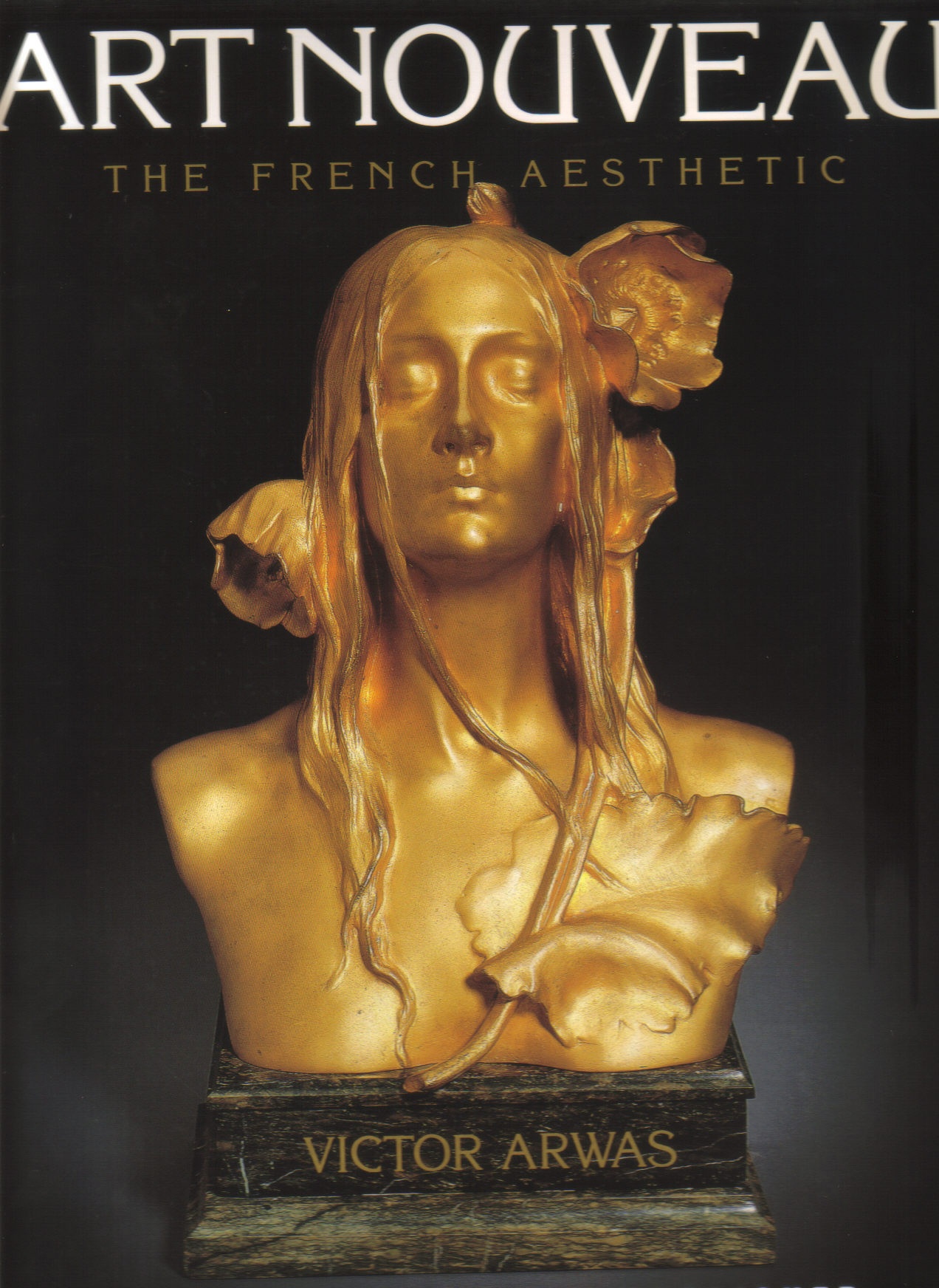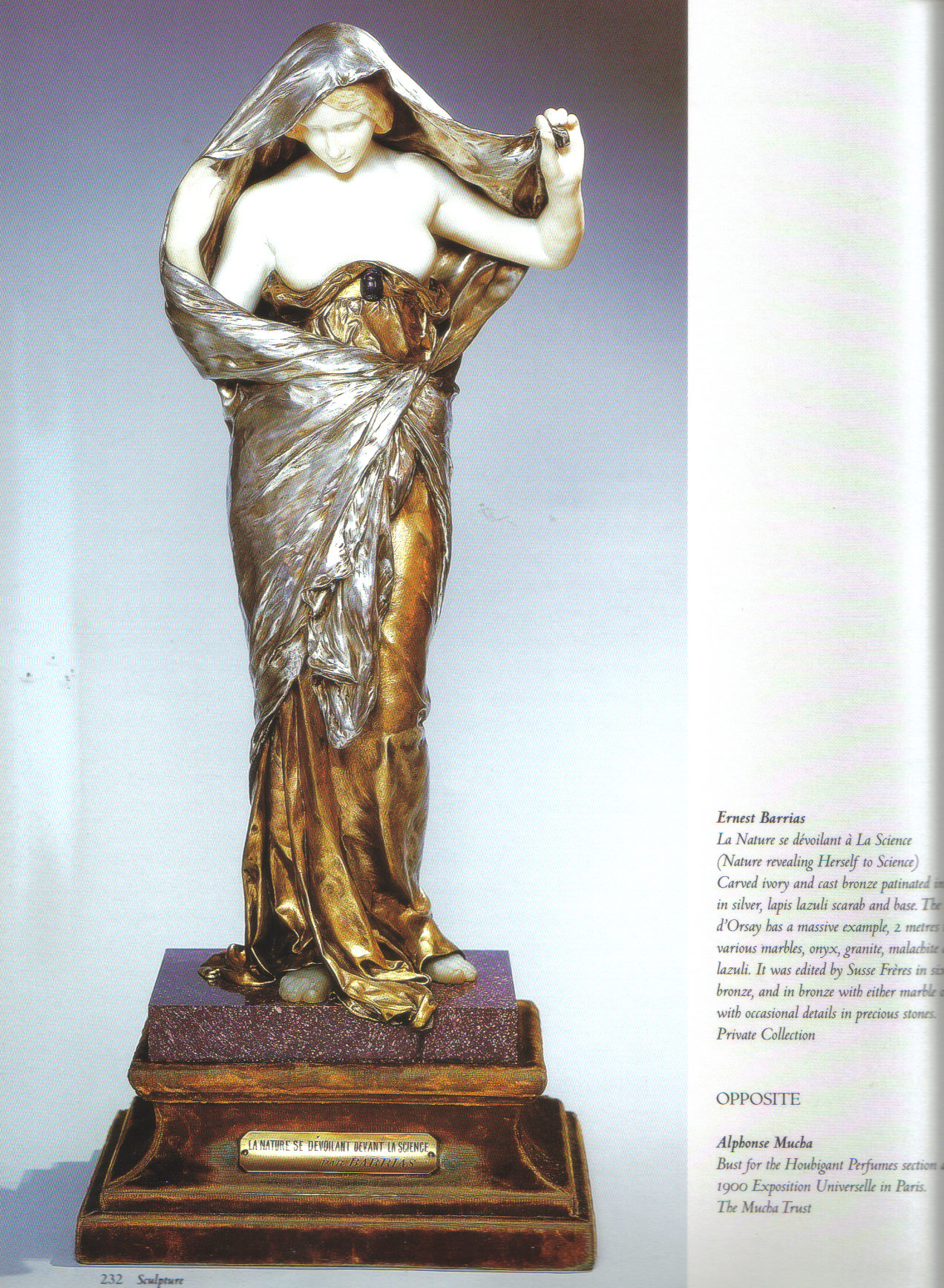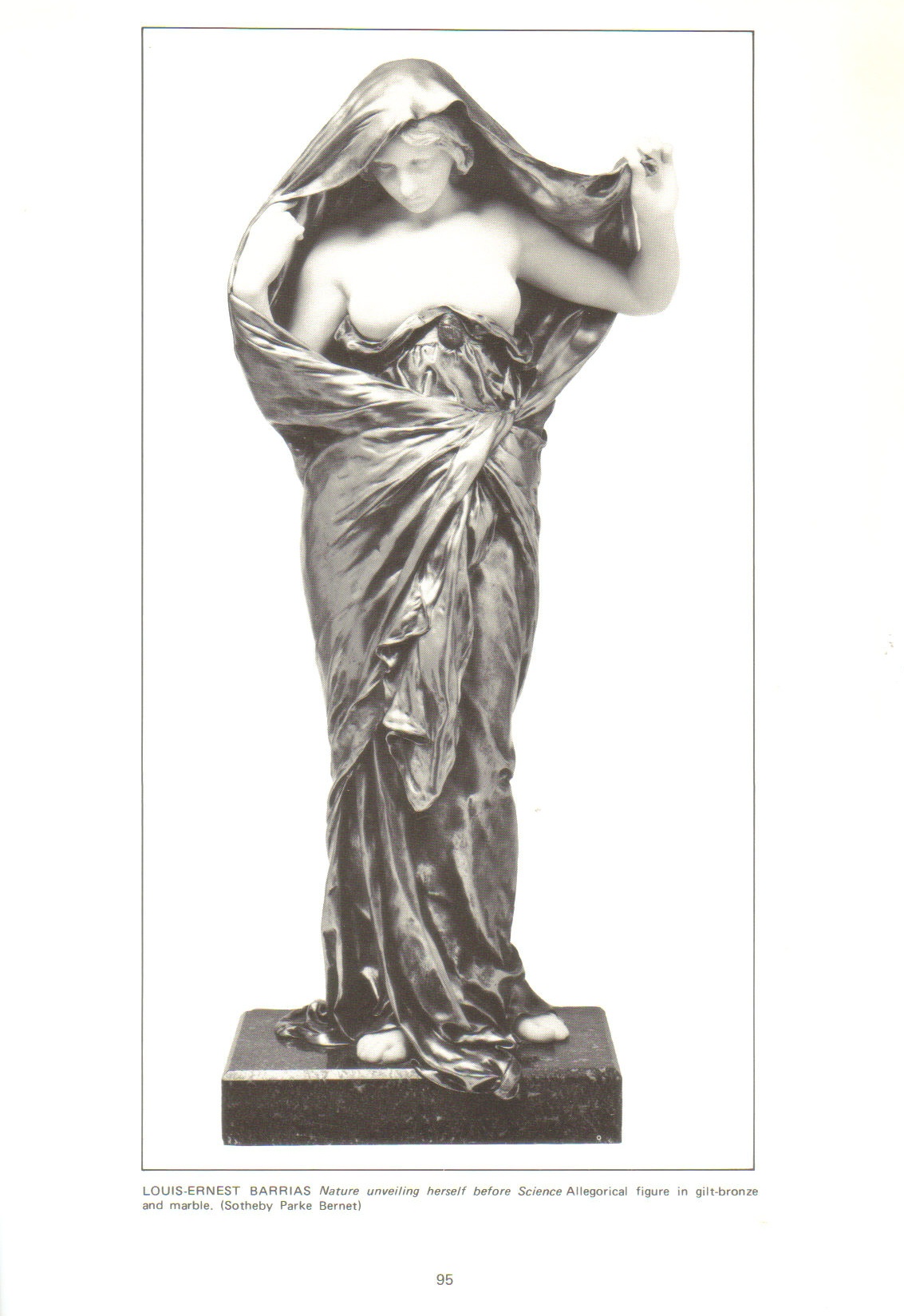Nature Revealing Herself To Science, A Gilt and Silvered Bronze Sculpture
circa 1900
Inscribed E. Barrias and stamped with Susse Frères
foundry mark
23 in (58.4 cm) high
cf. Victor Arwas, Art Nouveau: The French Aesthetic, 2002, p.232
Alastair Duncan, Art Nouveau Sculpture, 1978, p.95
'Le Salons de 1899, Sculpture', Gazette des Beaux-Arts, 1899, p.284
23 in (58.4 cm) high, including the marble base
cf. Victor Arwas, Art Nouveau: The French Aesthetic, 2002, p.232
Alastair Duncan, Art Nouveau Sculpture, 1978, p.95
'Le Salons de 1899, Sculpture', Gazette des Beaux-Arts, 1899, p.284
In this piece, nature is personified as a young woman, semi-clad, slowly removing the veil in which she is wrapped, emerging as if from a cocoon. Later versions were exhibited in various Salons until 1908, and now reside in the School of Medicine in Paris (commissioned 1902), the Louvre Museum and the Musée d’Orsay, Paris. Its popularity was such that the Susse Frères foundry issued reductions in six sizes from 8 to 48 inches, comprising various patinations and materials including bronze, bronze with ivory, bronze with marble, some with lapis lazuli or malachite scarabs and some with snake arm bands on the upper left arm. Though many copies were made, examples in bronze and marble complete with the lapis lazuli scarab and arm band are rare.
Barrias, who was the son of a porcelain painter and brother of the well-known painter Félix-Joseph Barrias, also started his career as a painter. In 1858 he entered the École des Beaux-Arts where he studied under François Jouffroy. He began exhibiting regularly at the Salon, where he won the Second Prix de Rome in 1861. He was awarded the First Prix de Rome in 1865, and thereafter was able to study in Rome at the French Academy.
Advances made in archaeology, revealing painted classical antiquities, elicited a powerful response from French sculptors in the 19th century. There was a craze for polychrome sculpture which gave rise to some painted examples but also to the incorporation into sculpture of various materials from the French colonies, particularly Algeria.






















